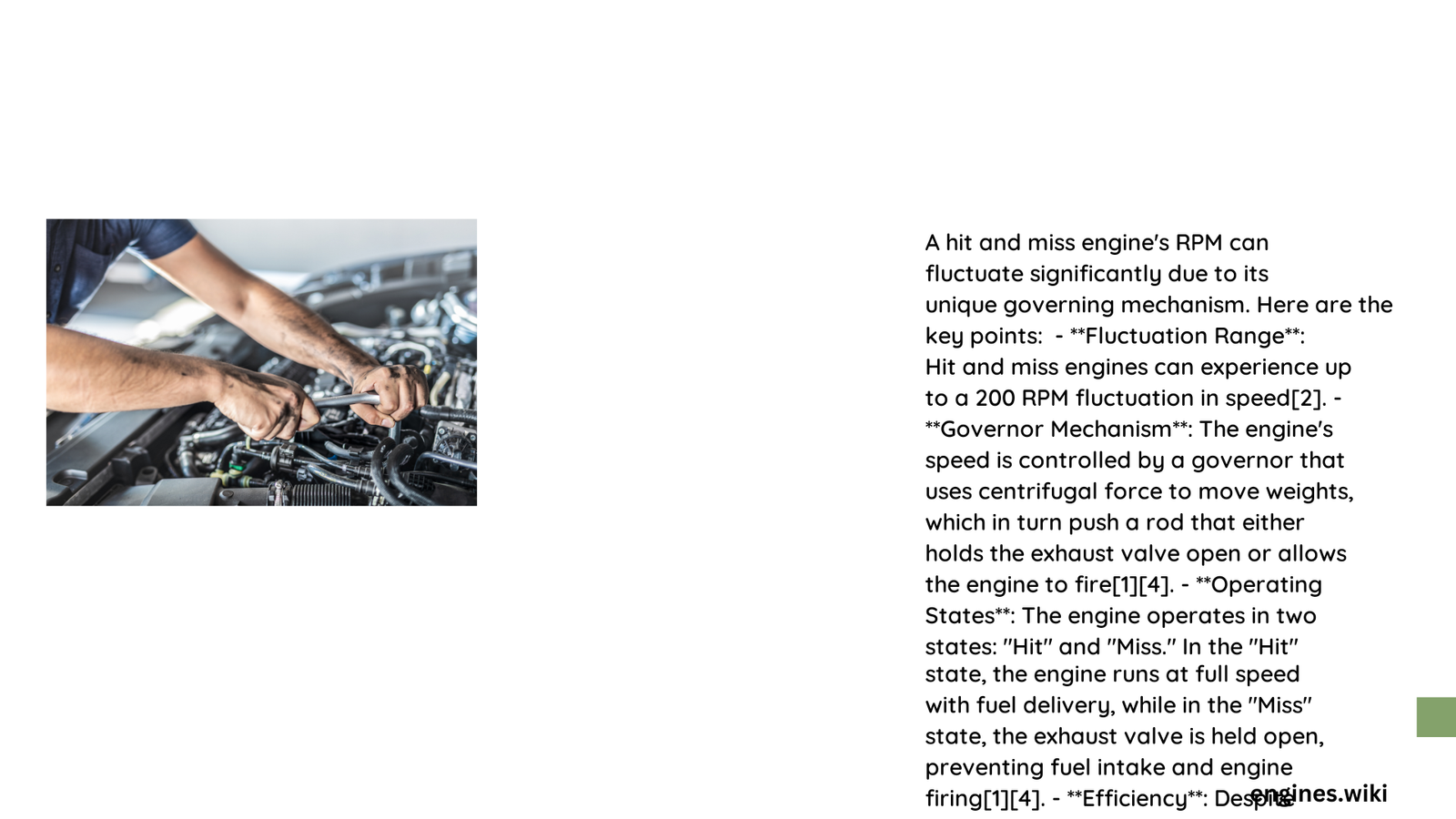Hit and miss engines represent a fascinating mechanical technology where engine speed and operation are dynamically controlled through a unique governor mechanism. These vintage powerhouses typically operate within a specific RPM range, balancing efficiency and power output through intermittent combustion cycles, making them a critical study for mechanical engineering enthusiasts and historical machinery preservationists.
What Are the Typical RPM Ranges for Hit and Miss Engines?
Hit and miss engines demonstrate remarkable RPM characteristics that distinguish them from modern continuous-combustion engines. The RPM range typically varies based on several critical factors:
Fundamental RPM Specifications
| Engine Size | RPM Range | Characteristics |
|---|---|---|
| Small Horsepower | 250-450 RPM | Frequent governor interventions |
| Medium Horsepower | 400-550 RPM | Balanced power delivery |
| Large Horsepower | 250-350 RPM | Slower, more controlled operation |
How Do Load Conditions Impact Hit and Miss Engine RPM?
Load conditions significantly influence the RPM of hit and miss engines:
- No Load Scenarios:
- Potential RPM spike up to 600 RPM
- Governor mechanism prevents over-speeding
-
Rapid cycling between firing and idle states
-
Under Load Conditions:
- Controlled RPM range of 250-400 RPM
- Governor ensures consistent power delivery
- Fuel conservation through intermittent combustion
What Techniques Optimize Hit and Miss Engine RPM?

Optimizing hit and miss engine RPM requires precise mechanical adjustments:
- Governor Weight Configuration
- Modify weight positioning
- Adjust spring tension
-
Fine-tune RPM threshold
-
Fuel-Air Mixture Management
- Calibrate mixer valve
- Ensure consistent fuel delivery
-
Prevent fuel system inefficiencies
-
Ignition System Synchronization
- Verify spark timing
- Maintain consistent firing intervals
- Align combustion cycles with governor mechanism
How Can You Troubleshoot RPM Irregularities?
Diagnostic approaches for hit and miss engine RPM issues include:
- Symptom Analysis
- Over-speeding indicators
- Inconsistent firing intervals
-
Unusual governor behavior
-
Diagnostic Tools
- Precision tachometer
- Visual governor mechanism inspection
- Fuel system pressure testing
Advanced Troubleshooting Techniques
- Measure RPM during different load conditions
- Compare actual performance against manufacturer specifications
- Systematically isolate potential mechanical limitations
What Factors Influence Hit and Miss Engine RPM Stability?
Critical factors affecting RPM stability include:
- Mechanical wear
- Lubrication quality
- Governor spring tension
- Fuel system integrity
- Ambient temperature variations
Conclusion
Understanding hit and miss engine RPM requires a holistic approach combining mechanical knowledge, precise measurement, and systematic diagnostic techniques. By mastering these principles, enthusiasts can maintain and optimize these remarkable vintage power systems.
